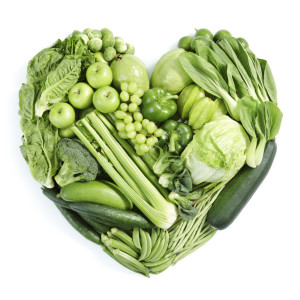How to Change Your Diet for Chronic Pain Relief

Dealing with chronic pain can often be a life-long struggle, underlined by years of medication and therapy. To many, the only way out of the pain is through pills. But while medication can alleviate some of the pain, the long term side effects of medication-based pain management can be drastic, and in some cases, devastating. To list just a few, WebMD notes that most over-the-counter pain management meds may cause symptoms such as:
- Nausea
- Liver damage
- Heartburn
- Stomach ulcers
- And more
No one can suggest that life without pain medication is easier when dealing with chronic pain – but a constant, long-term overexposure to NSAIDs and other related meds can bring a host of other unwelcome issues to the table, calling attention to the need for sustainable and healthier alternatives, or supplemental pain management tips.
And among these, few carry as many widespread benefits to overall health, longevity, and quality of life as a change in diet. Changing your diet to include more antioxidant-rich, heavily nutritious anti-inflammatory foods can do wonders for chronic pain relief. But before we take a look at how diet and food affects your body and its relationship with chronic pain, we need to step behind the issue and understand how pain works.
What is Chronic Pain?
Pain isn’t meant to last very long in a properly-functioning body – it works as a warning system, an alarm that goes off sharply and shortly to warn you that something is very wrong, or when an underlying health condition reaches critical levels of danger.
Chronic pain, defined as pain that lasts for longer than three months, often occurs when your warning system is broken. This is especially common after injuries, as per Healthline, when nerves may be damaged to the point that they misfire and malfunction, sending pain signals when nothing is effectively wrong.
In other cases, chronic pain is the symptom of an underlying medical condition, like arthritis or spinal stress. And finally, there is psychogenic chronic pain – not caused by any physical factors, but by mental conditions like depression or anxiety, as per Very Well. So how does food play into all of this?
The answer lies in inflammation. While your food choices do not always cause inflammation or pain, they can easily exacerbate your chronic pain, and multiply its effect – or, when managed properly, lessen your symptoms and provide chronic pain relief.
How Food Affects Inflammation
Inflammation occurs when the body is fighting to remove foreign objects or bodies from its system, or when it is healing itself. It’s not necessarily a bad thing, as in its natural, healthy state, inflammation can be defined as hyperactivity in a specific part of your body, highlighted by higher temperatures and swelling.
But chronic inflammation, like chronic pain, means something has gone wrong, and your body is stuck constantly fighting what it perceives to be foreign cells, even if these are your very own.
When your body is injured, it draws on its own resources to heal that injury. Yet, as we all know, you are what you eat – and if your diet is primarily consisting of inflammatory foods, then you exacerbate the effects of arthritis and chronic pain. Red meats, sugars, refined oils, and hydrogenated fats are all common food items that, as per Harvard, increase inflammation in the body.
That is not to say meat, sugar, or fat is bad. Sugar is necessary for your body, as a source of fuel – but it is best consumed in the form of starches, in potatoes, and grains like rice. Fat is absolutely necessary for every major function in the body, and the absorption of vitamins – but too many seed oils, or any amount of trans fats will harm your body. Cold-pressed olive and coconut oils and fish are better sources of fat.
Meat, finally, is a clean source of energy and protein – but eating meat excessively without sufficient amounts of fruits and vegetables can lead to health consequences. One study in particular links meat to oxidative stress, obesity and inflammation. The exact mechanisms behind it are not exhaustively researched, but a suggested culprit is advanced glycation end-products, or AGEs.
What are AGEs?
AGEs are proteins bound to a glucose molecule, and the trouble with them is that the body has a hard time breaking them down, and thus releases an excessive amount of inflammatory messengers called cytokines, as per nutrition expert Julie Daniluk on CNN.
AGEs are most commonly linked to sugars, but are also far more present in cooked meats than in vegetables, as per a study by Jaime Uribarri, MD et al. However, meat and sugar consumption aren’t the root cause of increased inflammation – while the evidence suggests that they certainly promote it, many people suffer from exacerbated levels of pain because of a lack of anti-inflammatory foods, perhaps even more so than due to a diet rich in meat.
A Basic Anti-Inflammatory Diet for Pain Relief 
One study showed no increase in inflammation following two months of increased lean meat. Instead, it may be that markers for inflammation go down not because of an elimination of meat from the diet, but an increase in antioxidant-rich, heavily nutritious anti-inflammatory foods, such as:
- Green leafy vegetables.
- Tomatoes.
- Fish fats.
- Berries and citrus fruits.
- Olive oils.
What all of these foods have in common are high levels of antioxidants, omega-3 fats, and polyphenols. Polyphenols are phytochemicals abundant in antioxidant-rich foods, and as per a study in the American Society for Clinical Nutrition, they are directly linked to the prevention of degenerative diseases such as cancer and heart disease.
Antioxidants, on the other hand, combat oxidative stress and help balance the body’s natural levels of oxidative stress. Oxidants, like inflammation, are necessary for a healthy immune system and fight to fend off foreign bacteria and viruses, but without antioxidants to limit the free radicals in your body, your risk of degenerative diseases like cancer and heart disease, and increased pain through inflammation, shoots up.
You don’t have to go vegan. As per Arthritis.org, a vegan or vegetarian diet greatly benefits from anti-inflammatory foods, but when mismanaged, can lead to deficits in B12 and iron. Aim to drastically reduce the amount of meat, sugar, and flour in your diet, and replace it with more the above foods, and other plant-based sources of starch and protein.
In Conclusion
Good food does a body good – that is about as simple as it gets. While the nutritional benefits of meat and dairy are noteworthy, excessive amounts of both is usually followed by a host of physical consequences.
More to the point, a diet lacking in fresh sources of micronutrients and phytochemicals – especially from dark leafy greens – can increase the lifetime risk of heart disease, cancer, and auto-immune diseases, and offer no chronic pain relief.
Do note, however, that not all forms of pain are managed effectively through a good diet. That being said, a good diet directly relates to the overall health and wellbeing of a person, bringing with it other benefits like a healthy weight, a stronger immune system, higher levels of alertness, and when paired with exercise, it can help keep a clear mind and boost self-esteem in cases of depression and anxiety.
Whether or not your chronic pain has anything to do with inflammation, the benefits of a nutritious diet should never be overlooked.

